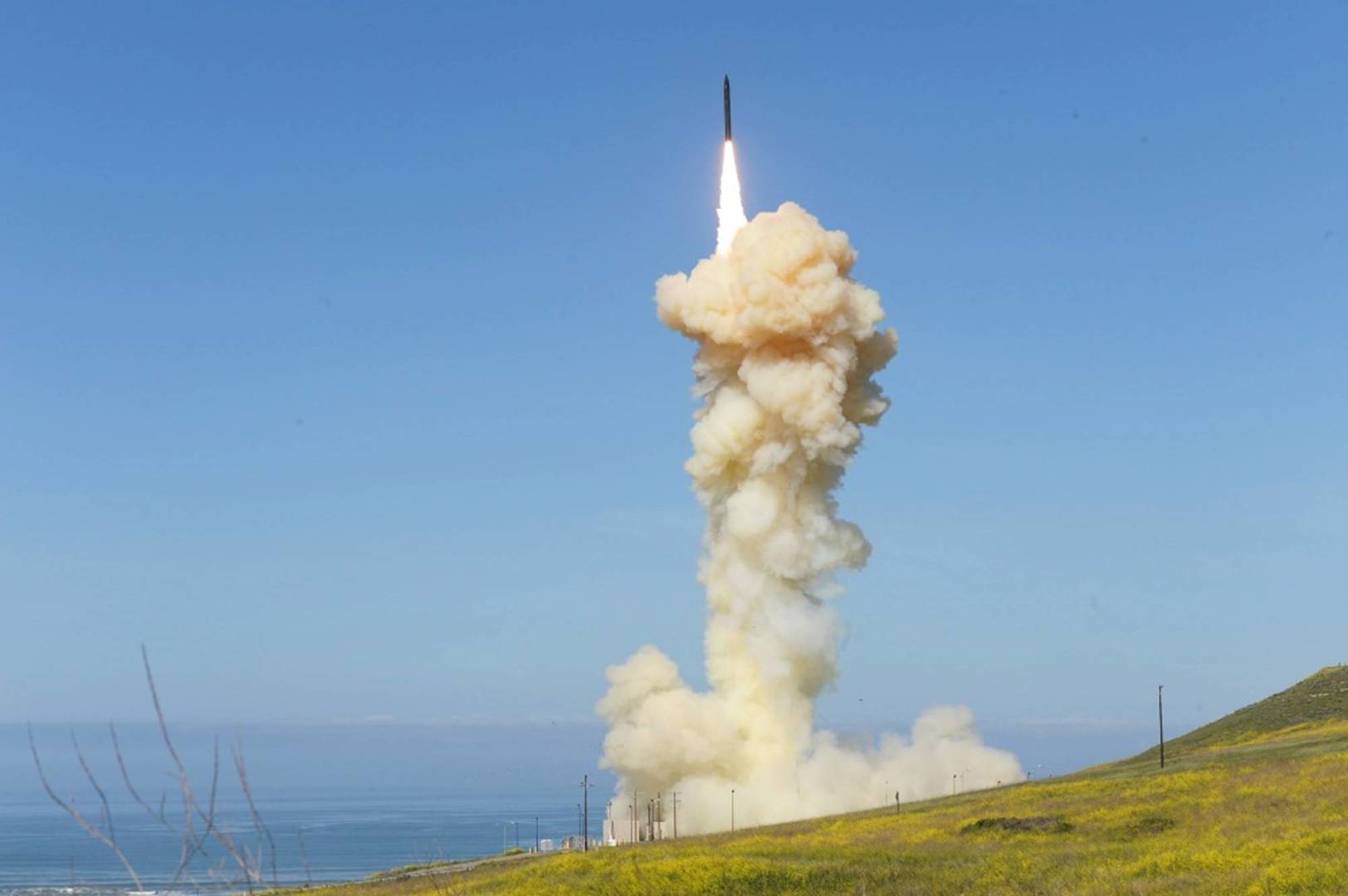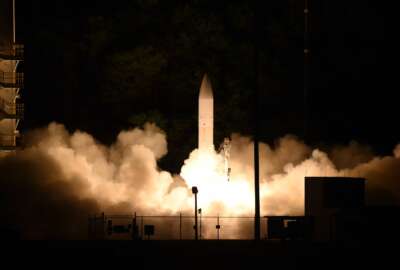New way emerges to test, validate military grade lasers
Air Force Research Laboratory (AFRL) unit has finished building what it calls a diagnostic system to evaluate the performance of high energy lasers.
Directed energy weapons, like hypersonics, always seem to be just around the corner. Now a unit of the Air Force Research Laboratory (AFRL) has finished building what it calls diagnostic system to evaluate the performance of high energy lasers developed by industry. The project is called GRAILE-II, or Government Radiometrically Accurate Instrument for Laser Evaluation Version Two. For more, the Federal Drive Host Tom Temin spoke with Joe Cox of AFRL’s Directed Energy Directorate.
Interview Transcript:
Tom Temin And just give us a little context here. Directed energy is something we know different military branches have been pursuing. What is the status of it now? Is there something you can put on a plane and aim it at someone and shoot it down yet.
Joe Cox Not yet. Directed energy is kind of a very high technology area in the sense that, you know, it takes a lot of resources and time to develop and solve all the different projects involved. Right now, kind of our current status is we’re building prototype systems, deploying them in the field, and seeing how warfighters and soldiers, airmen and sailors use these weapons, how effective they are in the enemy, so that we can bring that information back, get the feedback to us as scientists in the lab to continue to develop the technology.
Tom Temin And what are some of the technological challenges? Because lasers themselves are nothing new. But is it the power? Is it the weight, or what are some of the problems yet to be overcome?
Joe Cox So kind of the direction energy technology overall has been continually developing over the past 50 years. And one of the big things driving this technology is the specific weight of these weapons. By that I mean we want to deliver a large amount of power to our target, but we need to generate that power and deliver it effectively. And that takes a lot of size, weight, and power. And so, this specific weight metric basically says how much can we deliver per unit weight. So, if we have a bigger system in terms of power, can we reduce this weight so that it can fit onto an aircraft. And so, in the past we’ve been sort of working on reducing this. So, for example in the past we’ve used our chemical lasers such as our chemical oxygen iodine lasers. And those were about ten times heavier in terms of specific weight versus our more recent state of the art systems such as our shield system. So, by reducing this weight, we can fit more power into a smaller platform and sort of bring this technology closer to being integrated into an aircraft.
Tom Temin All right. Makes sense. And tell us about the GRAILE-II system that you have built, which is more of an evaluation and assurance type of operation. What have you actually got here?
Joe Cox So the GRAILE-II system is a laser diagnostic. And by that I mean it’s a system which is designed to make authoritative measurements of a directed energy system in terms of its power. So, by this I mean we can have some high energy laser system and it provides input into our GRAILE-II system. So based on this input, the GRAILE-II system can decide the quality of this laser. As in does this laser produce a high-quality beam, doesn’t produce a lot of power, and do so in an authoritative way.
Tom Temin That means then, that you could tell whether it could have, say, a lot of power, but if it’s unfocused, it probably won’t do very much good. And if it’s really super focused in and very high-quality beam, but it doesn’t have enough power to penetrate a gas tank of an enemy aircraft, it’s probably no good either. Is that the kind of questions you can answer?
Joe Cox Yeah, that’s kind of exactly kind of what we look for. And if we define these good laser sources, I call it good. But what I mean by that is something that could be effective in a directed energy application, as a system that has kind of two traits, the ability to generate a lot of light so that I can deliver a lot of energy on target. That’s kind of the energy part of directed energy, as well as the ability to project this light, you know, over several miles, several kilometers over long ranges and focus it onto a small target. And that’s kind of the directed part of the director energy. So, when we have these two together, we can build a system of what we need for our directed energy application.
Tom Temin We’re speaking with Doctor Joe Cox, technical lead at the Directed Energy Directorate, which is part of the Air Force Research Laboratory. And how does it work? I mean, these are being developed by industrial partners of the Air Force, and so do they ship prototypes to the lab. And then you verify what they say about it, because they must have the same measurement ability, the companies as the lab does.
Joe Cox So in the past vendors have kind of provided their own diagnostics. They build up some sort of measurement and conduct this measurement on their laser and then report what they find to the Air Force, you know, to the government. This had limitations in the sense that it led to the question, you know, could we trust that the vendors are always providing the most authoritative, the most realistic, the most representative metrics of their system to us? And kind of answering these questions lead us to the development of the GRAILE-II system, because we want to be able to as the customer, you know, we use taxpayer dollars to purchase these lasers, and we need to make sure that they work every year to do so with these laser diagnostics, we can take our system to the vendor, test with our metrics, and come up with an authoritative value that we can compare to other vendors systems. And this allows us to make a more objective decision on, you know, how good their laser is, the quality of it, and whether their system meets our needs.
Tom Temin Sure. So, it’s almost like independent verification and validation.
Joe Cox Exactly. That’s kind of an important thing as we’re building more and more of these systems, you know, we’re having more and more vendors compete, you know, work these contracts. But in the past it might have been fine to use the vendor supplied metric for, you know, a one-off system. But, you know, now we want to do these comparisons and say, okay, who do we want to work with moving forward for our larger lasers for, you know, mass production and having these authoritative metrics allows us to do that.
Tom Temin Right? So, in other words, you want to have much more assurance that this thing will do as promised before you go to the production level of contracting, say.
Joe Cox Exactly. And that’s kind of an important piece. I mean, yeah, we trust the vendors to an extent, but, you know, trust but verify. Sure. If you know, if the vendors know, yeah, we’re going to be testing with our diagnostics, then they’re more likely to build a system which meets all of the requirements, you know, not just the ones that are picked for this specific test. And kind of doing this can help us achieve a more robust, system delivered from the vendor than otherwise.
Tom Temin And do Air Force’s particular requirements come into the equation? For example, if you are, say, a Navy laser, you might be further away aiming at a much bigger target that’s moving much slower and has much thicker skin, say, than if you’re the Air Force aiming at something on the ground or another aircraft where it’s moving faster, it’s thinner, you know, it’s thin aluminum instead of thick steel, and the distances might be different, etc., etc. and that must figure into what it is you’re testing also.
Joe Cox Yeah, that’s definitely true. So, for example, like putting a laser on an aircraft or in the air, and the air is a lot thinner up there. And so, there’s less atmospheric effects such as turbulence, which can disrupt our laser and can, you know, have different effects when we deliver the laser to the target. In other applications, such as in a sea-based application, you know, there’s salt spray and more humidity in the air, and those can affect the performance of the laser.
Tom Temin And I imagine the power available, besides the weight and the energy figures into this, because on a ship you can have an even. They have power limitations, but probably not the same power limitations that might be on an aircraft.
Joe Cox Yeah, that’s definitely true. And that’s kind of one of the big drivers of our push for a specific way that the Air Force Research Laboratory, you know, we want to be able to get more power into less weight so we can fit our laser onto the aircraft. Other services don’t have that problem to the same extent as the Air Force. And so, there’s more focus on other aspects of the laser versus a specific way.
Tom Temin And this is really an inside the weeds question. But is there any thought that the APU on an aircraft could be continuing to run after it takes off? And that’s the source of power for the laser?
Joe Cox So using the APU for running the laser, I mean, that sounds like an interesting concept. The big limitation is we’re talking about lasers normally on the order of ten plus kilowatts, you know, 30kW, 50kW larger is what we’re interested in. And perhaps if we have some sort of battery system, we can charge it with the APU. But in general, I always view those as lower power systems. And so, it would take a while to build up the energy needed to run the laser. And so that could be a possibility, you know, in terms of integrating into it and then charging with the battery, but, you know, running it constantly, we quickly run out of energy.
Tom Temin All right. Good. Well, no charge for the suggestion. And so basically then you have a very complicated multi factor equation power weight energy output range focus to balance before something can be deployed on mass by the Air Force.
Joe Cox Yeah that’s correct. And all of these different factors you know there’s a tradeoff. If you make one better, then you’re going to trade off on the other and make his performance worse. And so, you kind of have to not only balance this, but you have to build new technology which can expand this trade space so that you can do more of these things at the same time.
Copyright © 2025 Federal News Network. All rights reserved. This website is not intended for users located within the European Economic Area.
Tom Temin is host of the Federal Drive and has been providing insight on federal technology and management issues for more than 30 years.
Follow @tteminWFED







